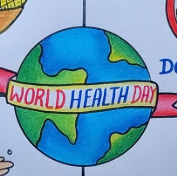Studying can sometimes feel overwhelming or dull, especially when you face large amounts of information or challenging subjects. One effective way to improve both motivation and retention is to use visual study tools. These tools help organize information in a way that is easier for your brain to process, making learning more engaging and less stressful. This article will explore several visual study tools and explain how they can boost your motivation to study.
Why Use Visual Study Tools?
Our brains are naturally wired to process visual information quickly and efficiently. When you use visuals to study, you tap into this natural ability, which can make learning faster and more enjoyable. Visual tools help break down complex topics into manageable parts, and the use of colors, images, and diagrams can enhance memory and understanding.
Additionally, seeing your progress and organizing your learning visually provides a sense of accomplishment, which is a great motivator to keep going.
Mind Maps: Connecting Ideas Visually
Mind maps are a popular visual tool that involves creating a diagram with a central idea in the middle, with related concepts branching out. This structure mirrors how our brains associate ideas, making it easier to remember connections between topics.
Creating a mind map encourages active learning because you have to think about how ideas relate and organize them yourself. The process of drawing and coloring your mind map adds an extra layer of engagement, which helps maintain motivation.
Flashcards with Images: Enhancing Memory with Visual Cues
Flashcards are a classic study method, but adding images can make them much more powerful. Visual flashcards help associate words or concepts with pictures, activating different parts of the brain and improving recall.
You can create your own flashcards by drawing or printing images, or use digital flashcard apps that include images and interactive features. Using flashcards regularly helps reinforce information through repetition while keeping the process dynamic and interesting.
Infographics: Simplifying Complex Information
Infographics combine data, text, and visuals into a concise and clear format. They are excellent for summarizing information, showing trends, or comparing ideas visually.
Reviewing or creating infographics about your study topics forces you to identify the most important points and organize them logically. This helps deepen your understanding and makes it easier to recall the material later.
Color-Coded Notes: Organizing Information by Themes
Using colors in your notes is more than just decoration. Assigning different colors to categories, themes, or levels of importance makes your notes easier to scan and study. Color coding can also help your brain group related information and find patterns.
When you review your notes, the colors guide your attention to key concepts and make the entire process faster and more effective. This simple visual strategy can transform note-taking into an enjoyable and motivating activity.
Study Planners and Calendars: Visualizing Your Progress
A study planner or calendar is a visual roadmap of your learning schedule. Writing down your goals, deadlines, and study sessions provides structure and helps manage your time efficiently.
Seeing your progress on a planner motivates you to keep going, as you can visually track the completion of tasks and celebrate milestones. It also reduces stress by breaking your workload into smaller, manageable steps.
Tips for Using Visual Study Tools Effectively
-
Personalize Your Tools: Everyone learns differently. Experiment with different visual methods and customize them to fit your style.
-
Use Technology: There are many apps and software that offer templates and interactive features for mind maps, flashcards, and planners.
-
Combine Methods: Don’t rely on just one tool. Using a combination—such as mind maps for brainstorming and flashcards for memorization—can reinforce learning.
-
Keep It Simple: Avoid overcomplicating visuals. Clear, straightforward diagrams and notes are usually the most effective.
-
Stay Consistent: Regular use of visual tools builds habits and improves study efficiency over time.
Conclusion
Visual study tools are a powerful way to boost motivation and improve learning outcomes. By engaging your brain with images, colors, and diagrams, you make studying more dynamic and enjoyable. Whether you use mind maps, flashcards, infographics, color-coded notes, or planners, these tools help organize information and track your progress. The key is to find the right combination that works for you and use it consistently. With visual tools, studying becomes less of a chore and more of an inspiring journey toward your goals.






